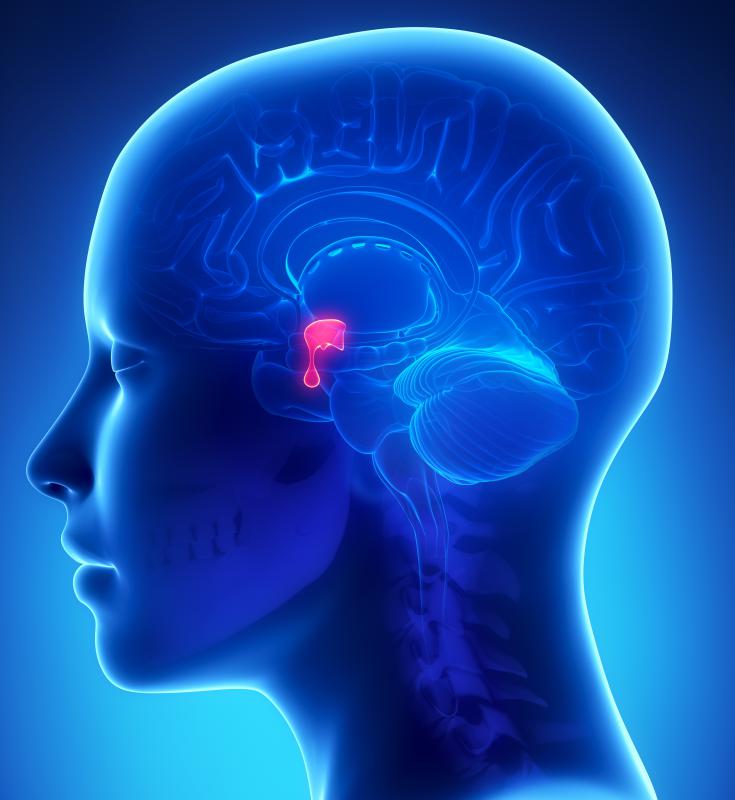At WiseGEEK, we're committed to delivering accurate, trustworthy information. Our expert-authored content is rigorously fact-checked and sourced from credible authorities. Discover how we uphold the highest standards in providing you with reliable knowledge.
What is Melanocortin?
Melanocortin is the name given to a type of hormone which forms part of a group produced by the pituitary gland in the brain. A hormone is a molecule which travels in the blood to tissues, where it binds to specific receptors, causing changes to occur. The melanocortin group of hormones acts as part of what is termed the melanocortin system, which affects many processes in the body, including the urge to eat, pigment formation, inflammation, energy levels and the sex drive.
In the pituitary gland, special cells manufacture a large protein which later becomes what is called proopiomelanocortin, or POMC. This large structure, known as a prohormone, is broken down to make the different types of melanocortin, which are all peptide hormones. In the body, a peptide is a short protein chain. As well as being produced in the pituitary, POMC is also formed inside the gut, the lungs, the placenta and another part of the brain called the hypothalamus. The melanocortin hormones formed from POMC include adrenocorticotropic hormone, or ACTH, and alpha melanocyte-stimulating hormone, or alpha-MSH, together with beta and gamma-MSH.

Melanocortins are known to bind to at least five different types of receptors, which are named MC1R through to MC5R. These receptors can be found throughout the body, which means that melanocortins have a vast range of physiological effects. What are termed melanocortin receptor agonists, substances which attach themselves to the same receptors as naturally occurring melanocortins and cause the same effects, are currently being developed by drug companies. In the future, these synthetic substances could be used to treat diseases such as obesity and diabetes, making use of the part played by melanocortins in regulating the appetite.

Using melanocortin receptor agonists, the anti-inflammatory actions of melanocortins could potentially be used to treat types of inflammatory arthritis, such as gout. The stimulating effect of melanocortins on sexual function may also lead to useful treatments being developed for impotence. One of the melanocortin receptors, MC1R, is known to be associated with skin pigment and tanning ability. Variations in the gene responsible for making MC1R are related to differences in hair and skin color, with certain types known to be associated with red hair and pale skin. Some variants of the gene are thought to indicate that a person may have an increased risk of developing skin cancer, and testing for such variants could help individuals lower their risk, enabling them to adopt more protective behavior when exposed to the sun.
AS FEATURED ON:
AS FEATURED ON:

















Discussion Comments
Melanocortin hormones are not only produced in the brain, but the skin itself. Other melanocortin receptors (besides the MC1R) are effective for tanning.
Post your comments